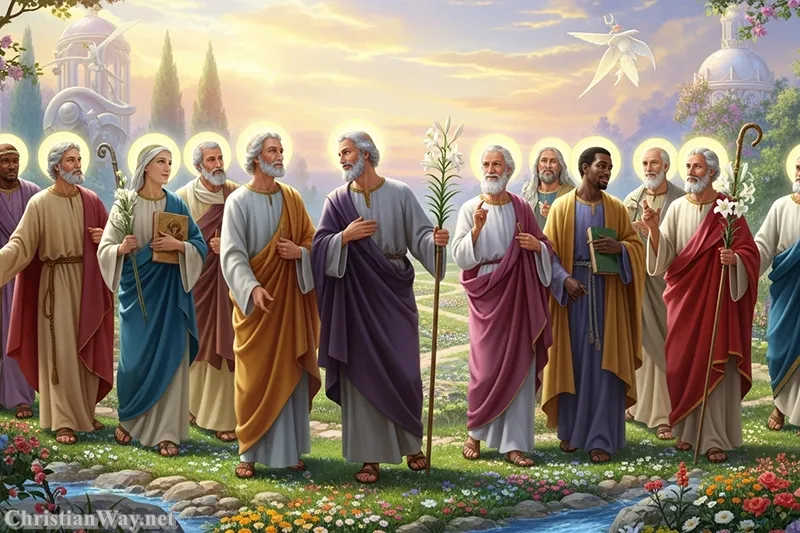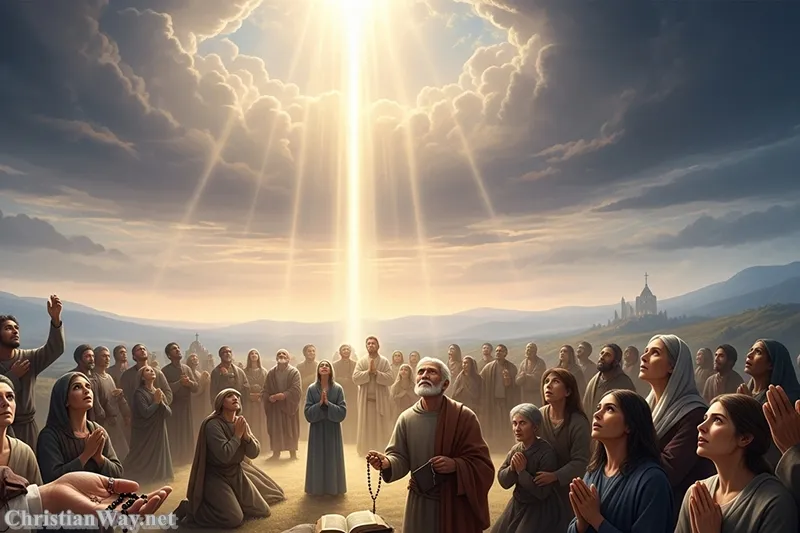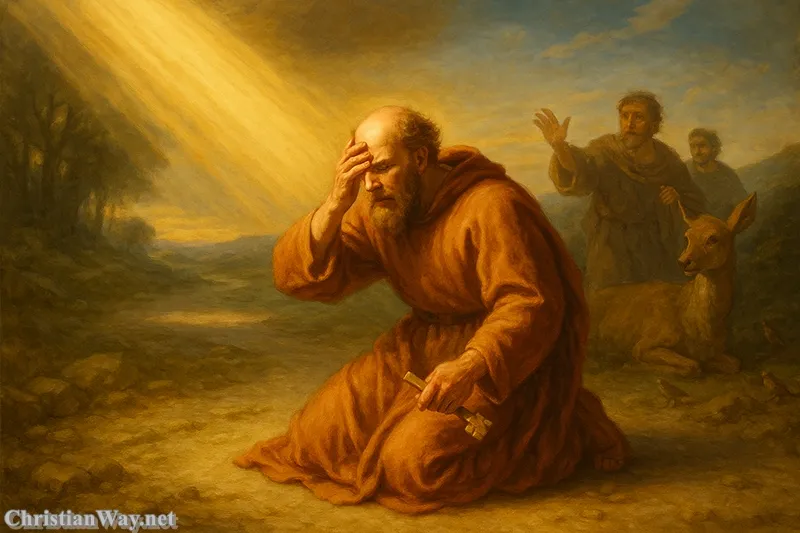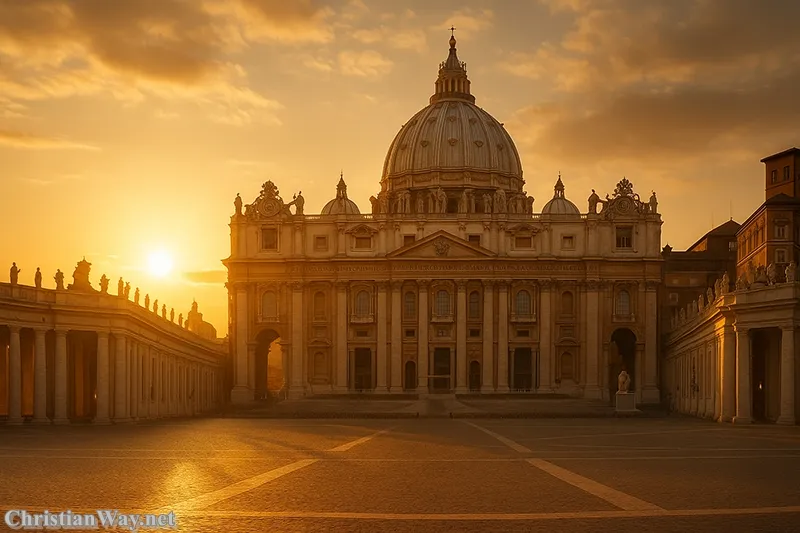Dear friends in Christ,
Every Sunday, millions of Christians across the world proclaim in faith: “I believe in one, holy, catholic, and apostolic Church.” These words, found in the Nicene Creed, are not mere statements of belonging — they are a confession of what we believe the Church truly is: not simply an institution or community, but the living Body of Christ Himself in the world.
When we speak of the Church as one, holy, catholic, and apostolic, we are echoing the ancient faith handed down from the Apostles. These four marks — often called the “notes of the Church” — help us recognize the true Church of Christ amid history’s many voices. They reveal her origin in God, her mission to sanctify the world, her universality that embraces all peoples, and her unbroken link to the first witnesses of the Resurrection.
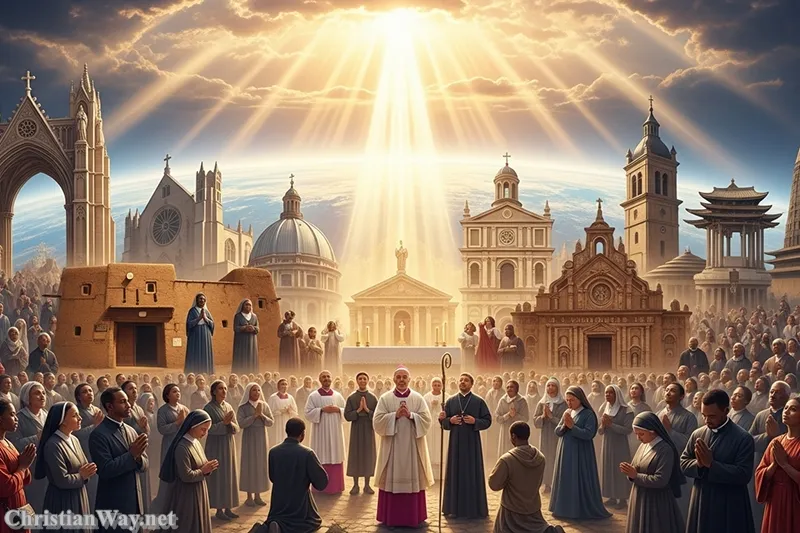
Let us then, with reverence and joy, meditate on what it means for the Church to bear these four sacred marks — not only as an article of faith, but as a living mystery that continues to shape our souls and our world.
The Church Is One
The first mark of the Church is unity — the oneness that mirrors the very heart of God, who is a communion of love: Father, Son, and Holy Spirit.
Unity in Faith and Love
Christ Himself prayed for this unity before His Passion: “That they may all be one; even as you, Father, are in me, and I in you” (John 17:21). This unity is not simply organizational or institutional; it is a spiritual communion rooted in divine love. Through Baptism, we are united with Christ and, therefore, with one another. St. Paul reminds us: “There is one body and one Spirit… one Lord, one faith, one baptism, one God and Father of all” (Ephesians 4:4–6).
This unity of the Church is visible in the shared faith handed down through Scripture and Tradition, in the common worship centered on the Eucharist, and in the bond of communion with the successors of the Apostles, especially the Bishop of Rome — the Pope — who serves as a visible sign of unity among the faithful.
Unity in Diversity
Yet, this oneness does not erase diversity. Across cultures and languages, the Church sings the same Gospel with countless voices. From ancient basilicas in Rome to humble chapels in rural Africa, from cathedrals in Asia to underground gatherings in places of persecution, the same Christ is adored.
The Church’s unity is like that of a great symphony — many instruments, one melody. Each local Church contributes its unique gifts, but all are united in the same Spirit and truth. The Second Vatican Council beautifully expressed this in Lumen Gentium: “This Church constituted and organized in the world as a society subsists in the Catholic Church, which is governed by the successor of Peter and by the bishops in communion with him.”
Unity, then, is both gift and task. We are called to guard it with humility, charity, and fidelity to Christ’s truth.
The Church Is Holy
The Church’s holiness is perhaps the most misunderstood of her marks. Many look at the failures of her members — scandals, sins, divisions — and ask, “How can the Church be holy?” The answer lies not in human perfection, but in divine grace.
Christ, the Source of the Church’s Holiness
The Church is holy because Christ, her Head, is holy. She is His Bride, sanctified by His love and made pure through His sacrifice on the Cross. As St. Paul wrote: “Christ loved the Church and gave Himself up for her, that He might sanctify her… that she might be holy and without blemish” (Ephesians 5:25–27).
Holiness in the Church is not about being flawless, but about being set apart — consecrated to God’s service and animated by His Spirit. The saints, from every century and walk of life, are living witnesses of this holiness. They show us that grace can transform weakness, and that divine love can make even the most ordinary life radiant with light.
The Pilgrim Church: Holy Yet in Need of Purification
The Church, while holy in her essence, remains ever in need of purification because her members are still journeying toward perfection. The Catechism of the Catholic Church explains: “The Church on earth is endowed already with a sanctity that is real though imperfect” (CCC 825).
This is why the Church continually calls her children to conversion. The sacraments — especially the Eucharist and Reconciliation — are the fountains of holiness that renew her life. The Church is holy not because all her members are saints, but because she holds the means by which sinners may become saints.
In her holiness, we glimpse not human achievement but divine mercy at work.
The Church Is Catholic
The word catholic means universal. This universality is not merely about geography, but about wholeness — the fullness of truth and grace that the Church possesses in Christ.
Universality of Truth
Jesus entrusted to the Apostles the fullness of His Gospel, saying, “Go therefore and make disciples of all nations” (Matthew 28:19). The Catholic Church guards this complete revelation, refusing to reduce or fragment it. She teaches all that Christ commanded, in every age and to every people.
Her teaching is not one opinion among many, but the voice of Christ continuing to speak through history. In the Church, the Word of God is interpreted faithfully, the sacraments are administered validly, and the Spirit continues to guide through the Magisterium — the teaching authority of the bishops united with the Pope.
Universality of Mission
But this catholicity is also missionary. The Church’s heart beats for the world. From the earliest days, the Gospel spread from Jerusalem to the ends of the earth, carried by apostles, missionaries, and martyrs. Every culture and people are invited to receive the Good News in their own tongue, within their own story.
Even today, the Church’s universality is seen in her global body — one family transcending race, language, and status. Whether in a crowded parish in Manila or a small mission in the Amazon, the same Eucharist is celebrated, and the same Christ is received.
Embracing All Humanity
To be catholic also means to embrace all that is truly human. The Church gathers into herself every truth, every beauty, every spark of goodness found in creation. As St. Irenaeus wrote, “Where the Church is, there is the Spirit of God; and where the Spirit of God is, there is the Church and all grace.”
This universality is not about dominance, but about communion — the desire that all may find in Christ the unity and love for which the human heart was made.
The Church Is Apostolic
The Church is apostolic because she is built upon the foundation of the Apostles — those chosen witnesses of Christ’s Resurrection — and remains faithful to their teaching through the ages.
Founded on the Apostles
In the Gospels, Jesus chose twelve men to be the first shepherds of His flock. To them He said, “As the Father has sent me, so I send you” (John 20:21). The Apostles were not self-appointed leaders but bearers of divine mission and authority.
Through the laying on of hands, this apostolic authority was passed down in unbroken succession — what we call Apostolic Succession — to the bishops of the Church today. This continuity ensures that the same faith once delivered to the saints (Jude 1:3) is preserved and transmitted faithfully.
Fidelity to Apostolic Teaching
The Church’s apostolic nature also means that her teaching is not her own invention. It is the faith of the Apostles, guarded and handed down through Scripture and Tradition.
As St. Paul urged Timothy: “Guard the deposit of faith” (1 Timothy 6:20). This deposit is not a museum relic but a living heritage — ever ancient, ever new — illuminating each age with the same truth of Christ.
The bishops, in communion with the Pope, serve as successors of the Apostles, ensuring the unity of doctrine and the authenticity of worship. This apostolic continuity is the golden thread linking us across centuries to that upper room where Christ first breathed His Spirit upon His Church.
Living the Four Marks Today
To profess belief in the “one, holy, catholic, and apostolic Church” is not merely to describe her — it is to participate in her mystery.
Every Christian is called to guard unity in charity, pursue holiness through grace, witness catholicity by embracing all with love, and live apostolic faithfulness by bearing the Gospel into the world.
In our fragmented, restless age, these marks remind us that the Church is not an outdated structure, but the living presence of Christ’s redeeming love. She continues to be the ark of salvation, sailing through the stormy seas of history, carrying within her the light of eternal life.
Reflect and Pray
The Church, in her deepest essence, is not ours but Christ’s. She is the Bride adorned by His grace, the Mother who bears us into divine life, and the home where God’s children learn to love.
When we confess our faith in the “one, holy, catholic, and apostolic Church,” we are not merely describing an institution — we are proclaiming our trust in Christ’s promise: “The gates of hell shall not prevail against it” (Matthew 16:18).
Let us then give thanks for the gift of the Church, and renew our desire to live as her faithful sons and daughters.
Lord Jesus Christ, You are the Shepherd of our souls and the cornerstone of Your holy Church.
Keep us one in faith, holy in life, universal in love, and steadfast in apostolic truth.
May Your Spirit renew Your Bride, that she may shine as a light to all nations until You come again in glory.
Amen.
— Fr. John Matthew, for Christian Way

